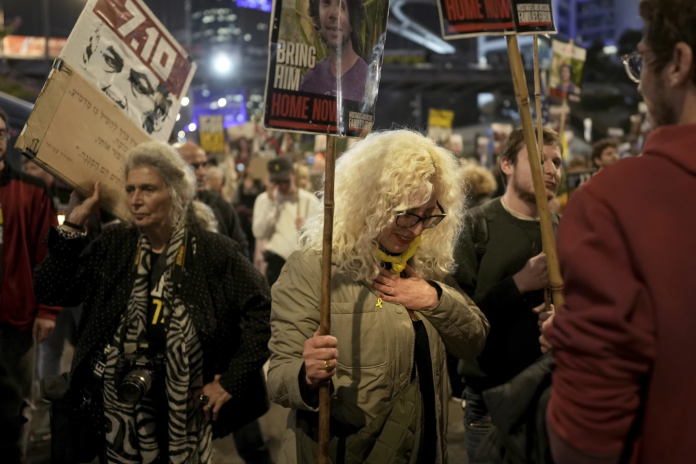After an exhausting 15-month war, Israel and Hamas signed a ceasefire agreement in the Qatari capital Doha. However, military experts are concerned about new provocations to reignite the military conflict.
The warring parties agreed on a truce for 42 days and the phased release of Israeli hostages and Palestinian prisoners. The ceasefire would commence on 19 January, Qatari Prime Minister Mohammed bin Abdulrahman bin Jassim Al Thani said.
However, the administration of Israeli Prime Minister Benjamin Netanyahu stressed that the agreement had several outstanding issues that should have been agreed upon by Thursday, 16 January. President Isaac Herzog called the agreement “the right move” to bring the captive Israelis home.
I offer my support to the Prime Minister and the negotiation team in their efforts to finalise this deal and call upon the Cabinet and the Government of Israel to accept and approve it when presented – bringing our sons and daughters home. This is the right move. This is an important move. This is a necessary move. There is no greater moral, human, Jewish, or Israeli obligation than to bring our sons and daughters back to us – whether to recover at home, or to be laid to rest.
Deputy chairman of the Hamas Political Bureau, Khalil al-Hayya, thanked Russia and other countries for supporting Palestine, congratulating the residents of devastated Gaza on the ceasefire. At the same time, he emphasised that the confrontation with Israel would persist despite the agreements reached.
Ceasefire terms
In the first phase, Israel will withdraw from densely populated areas of Gaza. Residents of northern neighbourhoods who wish to return to the south will be screened for weapons by representatives of Qatar and Egypt.
Israel Defence Forces (IDF) will remain in a buffer zone inside the Gaza Strip, but no further than 700 metres from the border. The Israeli military insists that controlling this area is important, as Hamas can smuggle weapons across the border.
Hamas, in turn, pledges to release 33 Israeli hostages, including all women, children and men over 50. The militants will first release hostages under the age of 19, then men over 50.
Meanwhile, Israel will free all Palestinian women and children under the age of 19, arrested since 7 October. The country will release 30 prisoners for each Israeli civilian hostage and 50 for each soldier. Among the Palestinians to be released will be those sentenced to life imprisonment for terrorism.
In addition, Gaza will receive 600 truckloads of humanitarian aid, 50 of which will include fuel, each day. Israel will also allow the wounded in Gaza to travel for medical treatment and will open the Rafah crossing on the border with Egypt seven days after the start of the first phase.
However, if the sides do not reach a permanent truce, hostilities will resume. The mediating countries, the US, Egypt and Qatar, have pledged to prevent a resumption of fighting.
In the second phase, Hamas will release the remaining hostages, including male soldiers, whereas Israel will liberate several hundred more Palestinians. The phase will end with a complete Israeli withdrawal from Gaza. The final stage involves rebuilding a devastated Gaza under the supervision of Egypt, Qatar, the UN and other states.
Pitfalls
Israel’s withdrawal from Gaza may be the most contentious, as Israeli politicians and officials have repeatedly assured that they will not cede control of at least the northern territories. If troops do not leave Gaza, the agreements will be scrapped and fighting will resume.
Earlier, incoming US President Donald Trump promised Hamas “hell” if the hostages were not released before his inauguration on 20 January. However, it appears that it was Israel that was the first to make concessions despite the fact that it managed to eliminate the previous Hamas command and leaders of Lebanon’s Hezbollah.
Military and political experts say Israel failed to achieve its goal because it sought not so much to avenge Hamas for the 7 October 2023 attack or to free the hostages, but to eliminate Gaza as a region seeking independence.
Yet even after killing nearly 50,000 people, including Hamas’ top leaders, destroying Gaza’s economy and much of its infrastructure, Israel was unable to break Palestinian resistance. Moreover, US Secretary of State Antony Blinken said that Hamas had already swelled its ranks with new fighters.
Some Israeli politicians, including National Security Minister Itamar Ben-Gvir, have called the ceasefire a “surrender deal.” If those who disagree with the ceasefire quit the government, Netanyahu will be forced to call snap elections.
Over the past 15 months, Israel has morphed from a victim of genocide to a defendant at the International Criminal Court (ICC) accused of committing genocide in Gaza. In doing so, the Netanyahu Government has irreparably damaged Israel’s image on the global stage.
THE ARTICLE IS THE AUTHOR’S SPECULATION AND DOES NOT CLAIM TO BE TRUE. ALL INFORMATION IS TAKEN FROM OPEN SOURCES. THE AUTHOR DOES NOT IMPOSE ANY SUBJECTIVE CONCLUSIONS.
Namir Sariy for Head-Post.com
Send your copyright content to [email protected] for publication in the INSIGHT section.
